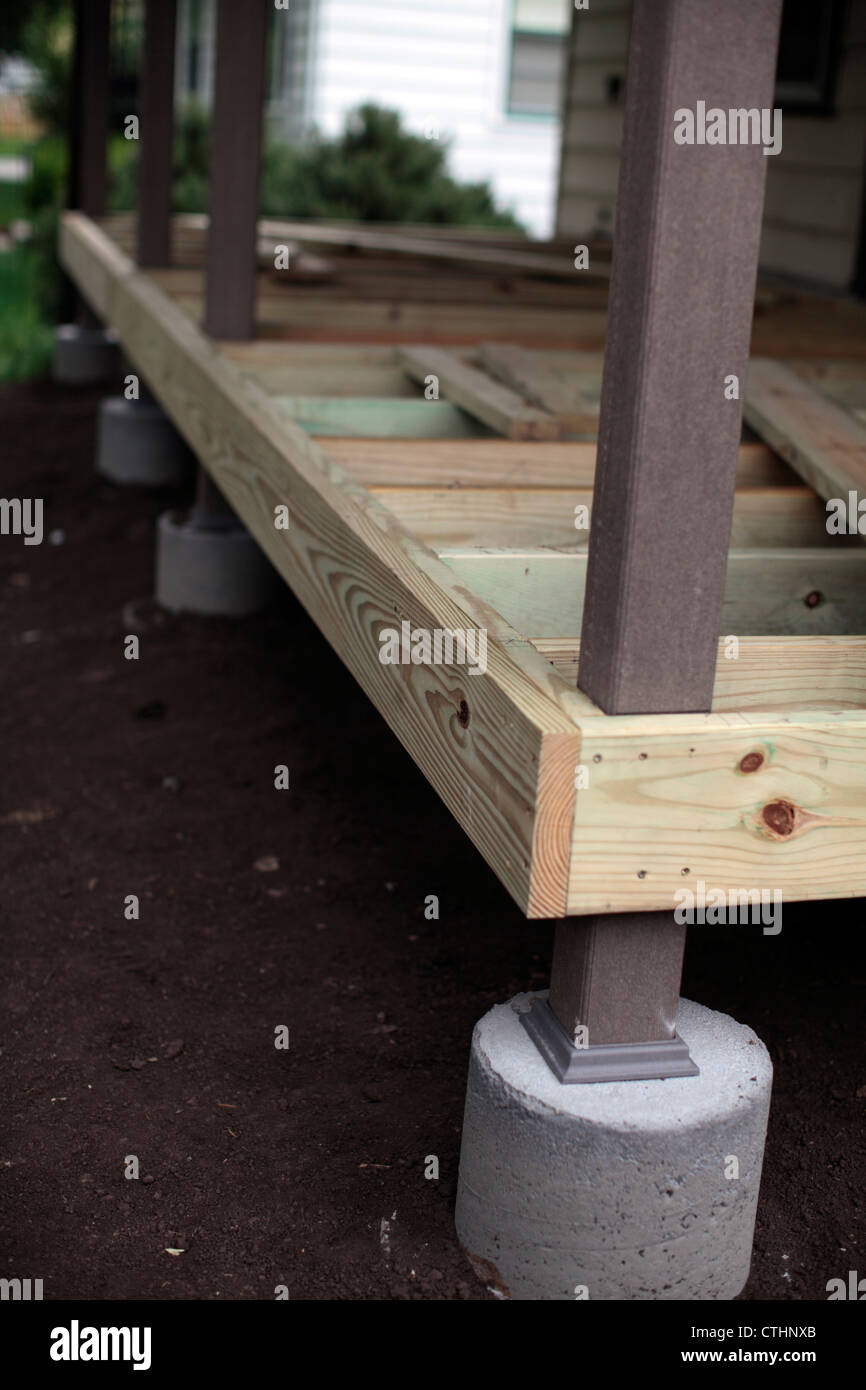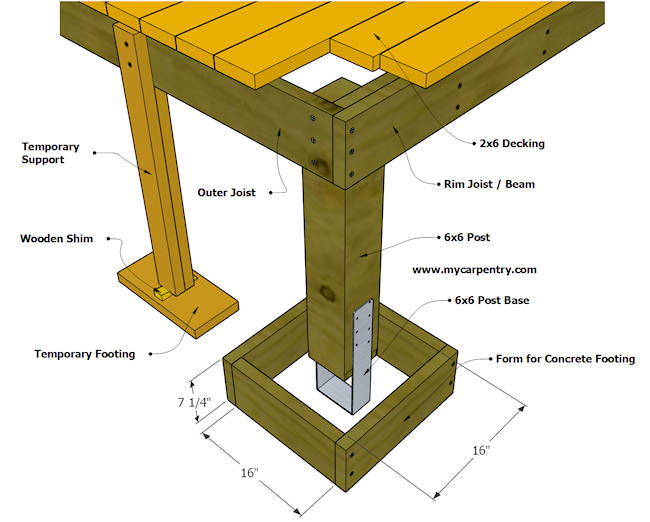Engineered for Success: The Scientific Research Behind Robust and Resistant Deck Footings
Engineered for Success: The Scientific Research Behind Robust and Resistant Deck Footings
Blog Article
Take Full Advantage Of the Life-span of Your Deck With Reliable and Strong Footings
As property owners, we invest a significant quantity of time and resources into developing the best exterior space. A deck is commonly the focal point of that space, providing a place to unwind, captivate, and delight in the beauty of nature. In order to totally optimize the life expectancy of your deck, it is crucial to ensure that it is built on dependable and solid footings. These grounds develop the foundation of your deck, providing security and assistance, and are frequently the distinction in between a deck that lasts for years and one that needs constant repairs. In this conversation, we will check out the significance of dependable footings, the different kinds of solid footing materials, proper installment methods, and how to preserve and inspect your deck's grounds to prevent damage. Whether you are in the procedure of looking or building a brand-new deck to enhance the longevity of your existing one, join us as we discover the keys to a deck that stands the examination of time.
Significance of Trustworthy Footings
The importance of trustworthy footings can not be overemphasized when it involves making best use of the lifespan of your deck. The footings act as the structure whereupon the entire framework relaxes, providing stability and support. Without a strong footing, the deck is at risk to shifting, sinking, and also collapse, which can dramatically minimize its life-span and pose safety threats.

Choosing the ideal kind of ground is additionally crucial. One of the most common kinds consist of concrete footings, helical piers, and sonotubes. Aspects such as dirt conditions, climate, and the dimension of the deck will figure out the most suitable alternative. Employing an expert to analyze the soil, layout the footings, and make certain appropriate installation is highly recommended.
Purchasing reliable footings may involve added expense and initiative upfront, however it is a rewarding financial investment that will add to the long-term longevity and security of your deck. By making sure a solid structure, you can appreciate your deck for several years to come, recognizing that it is built to hold up against the test of time.
Sorts Of Solid Footing Materials
To guarantee the stability and long life of your deck, it is vital to take into consideration the numerous kinds of strong footing products available. The choice of footing product is crucial as it offers the essential assistance and stability to hold up against the weight and lots of the deck structure.
One reliable and usual product used for deck grounds is concrete. Concrete grounds are long lasting and offer superb security. They can be poured directly right into the ground or utilize precast concrete grounds for much easier setup. One more choice is helical piers, which are steel shafts with helical plates that are screwed right into the ground. These piers use superb load-bearing capacity and can be made use of in different soil problems.
For locations with poor soil problems, such as expansive or loose soils, a ground system that utilizes steel or composite piers might be preferred. Deck Footings. These piers are driven deep into the ground to get to secure dirt layers, ensuring the stability of the deck
Sometimes, deck footings can likewise be constructed utilizing treated her response lumber. Nevertheless, it is necessary to make sure that the lumber is appropriately treated to withstand rot and degeneration triggered by exposure to wetness and pests.
When picking a footing product for your deck, it is important to consider aspects such as dirt conditions, climate, and regional structure codes. Consulting with a professional service provider or structural engineer can help figure out the most ideal ground material for your specific deck project.
Appropriate Installment Techniques for Grounds
Thinking about the significance of making sure security and durability for your deck, it is crucial to understand the appropriate setup strategies for grounds. The success of your deck project depends greatly on the integrity of its foundation, which is why adhering to the appropriate installment strategies is essential.
Firstly, it is essential to establish the suitable dimension and depth of the grounds based upon the style and load requirements of your deck. This info can be gotten from building codes or with consultation with an architectural engineer. As a general rule, footings must go to least 12 inches in diameter and prolong below the frost line to prevent settling or shifting.
As soon as the dimensions are established, the following step is excavation. Digging the holes for the grounds should be made with accuracy, making certain they are deep adequate and have a degree bottom. Deck Footings. This will give a stable base for the grounds
To additionally improve the stability of the grounds, it is advised to use a concrete combine with a strength of at least 3,000 psi. This will make certain the grounds can stand up to the weight and forces exerted by the deck.
Throughout setup, it is essential to keep the footings degree and straightened correctly. This can be accomplished by utilizing a level and string lines to guide the placement of each ground.
Keeping and Checking Your Deck's Grounds
Routine maintenance and thorough evaluations are important for guaranteeing the long-term security and security of your deck's grounds. In time, grounds can catch tear and wear, climate condition, and dirt movement, which can jeopardize their structural integrity. To maximize the life expectancy of your deck's footings, it is essential to carry he has a good point out a routine maintenance regimen and conduct comprehensive assessments.

In addition, it is important to evaluate footings for any type of signs of linked here damage or damage. This consists of monitoring for splits, splits, or crumbling concrete, as well as any type of signs of motion or negotiation. Any concerns ought to be dealt with promptly to stop additional damage and make sure the security of the deck.
Additionally, it is advised to evaluate the bordering soil for any type of indicators of erosion or changing. Dirt motion can affect the security of the footings, so it is crucial to deal with any kind of soil-related problems without delay.
Indications of Ground Damages and Exactly How to Address Them
One more indication of footing damages is falling apart or splitting of the concrete grounds. If you observe any kind of splits or deterioration in the footings, it is vital to have them inspected and repaired by a professional. Bear in mind, attending to ground damages without delay can assist make sure the lasting security and security of your deck.
Verdict
In conclusion, ensuring the integrity and toughness of grounds is crucial for optimizing the lifespan of your deck. By making use of strong footing materials and effectively mounting them, you can avoid damage and maintain the stability of your deck.
These footings create the structure of your deck, supplying stability and assistance, and are frequently the distinction between a deck that lasts for years and one that needs constant fixings. In this discussion, we will explore the significance of reputable footings, the various types of solid ground materials, appropriate setup strategies, and how to preserve and evaluate your deck's grounds to avoid damages.Routine maintenance and detailed inspections are essential for guaranteeing the long-term stability and security of your deck's footings. Keep in mind, dealing with ground damages quickly can assist make sure the lasting security and safety and security of your deck.
By making use of solid ground materials and correctly mounting them, you can avoid damage and keep the stability of your deck.
Report this page